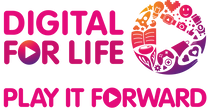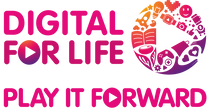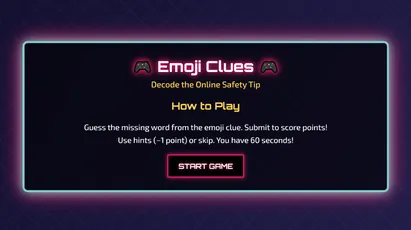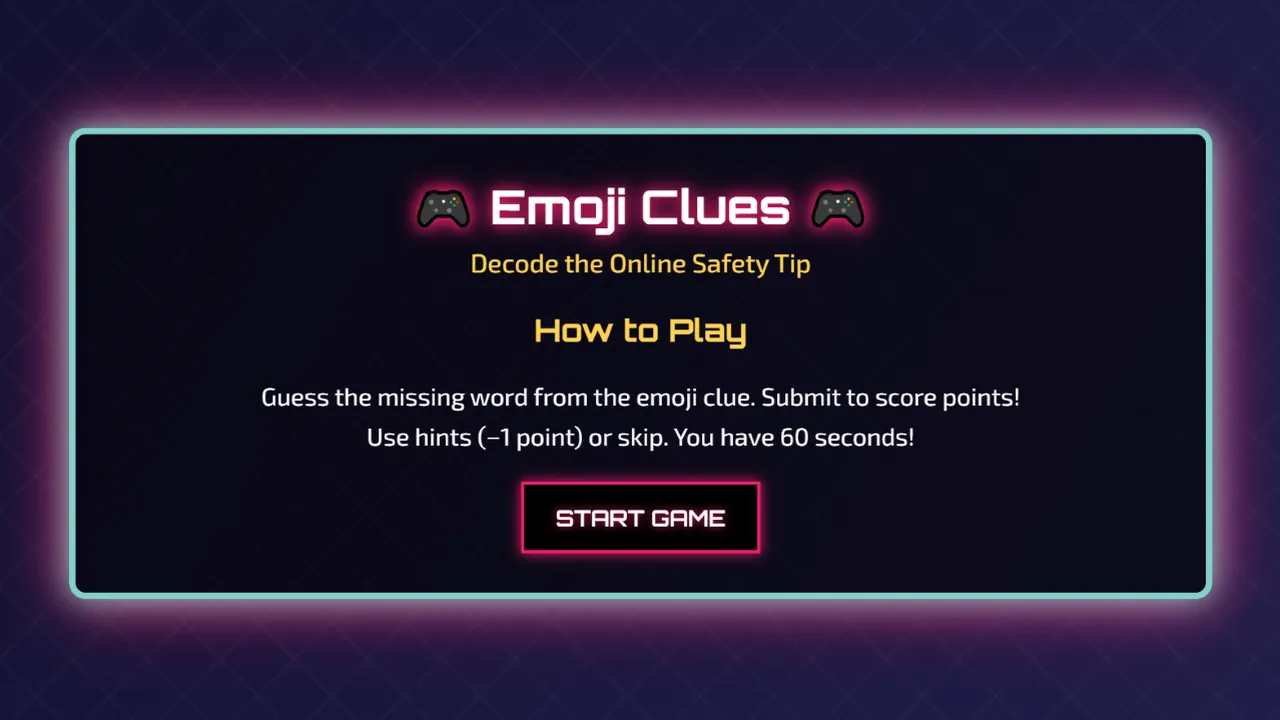Think you know your online safety basics? Let’s put your skills to the test!
We’ve turned key online safety tips into fun emoji clues. Complete the online safety tip using the emojis provided. If you feel stuck, you can skip the question or ask for a hint!
Answers
How did you do for the questions? Let’s review the answers together 😊
1. set privacy (👁️) settings
Your privacy settings helps you control who can see your posts and messages. A good habit is to review your settings every few months to make sure only trusted people have access.
Learn more here.2. secure personal (👤) information
Keep details like your phone number, address, or school private. This helps prevent misuse of your personal data and protects you from scams or identity theft.
Learn more here.
3. use strong (💪) passwords
Using strong passwords or passphrases with numbers, symbols, and different letters makes it harder for others to hack your accounts. You can also enable two-factor authentication, which adds an extra layer of protection.
Learn more here.
4. balance (⚖️) your time online
Screen use can be fun and useful, but too much can affect your sleep, studies, and health. Use app limits or reminders to take breaks and stay balanced.
Learn more here.
5. be kind (🥰) online
Treat others with respect and empathy, just like you would in real life. A simple positive comment can make someone’s day better.
Learn more here.
6. think (💭) before you post
What you post online can stay for a very long time and affect others, so choose your words with care.
Learn more here.
7. manage digital (🌐) footprints
Remember that everything you post leaves a trail and may affect your future. You may search for yourself online and see what others might find.
Learn more here.
8. spot fake (❌) news
Following these steps allows you to avoid spreading falsehoods.
Learn more here.
9. check for scams (💸)
Be alert to suspicious requests for money or personal details. If a deal looks too good to be true, it usually is.
Learn more here.
10. block (🚫) abusive users
Take control when someone bullies or harasses you. By blocking, you stop them from contacting you further.
Learn more here.
11. flag (🚩) inappropriate content
Use platform tools to mark posts, messages, or videos that break community guidelines. This helps platforms keep online spaces safe for everyone.
Learn more here.
12. report (📢) harmful behaviours
Alert platforms or even authorities when online harms happen. You may take screenshots so that you can provide evidence when making a report.
Learn more here.
13. support (🤝) others in need
Check in on friends or stand up for someone in need of your help. Even a small message of care can make a big difference.
Learn more here.
14. reach out to a trusted person (🙋🏻♀️)
If something online makes you feel uncomfortable, tell a parent, teacher, or close friend. Reaching out helps you feel supported and work together to find solutions.
Learn more here.
15. seek help (🆘) when unsure
Reach out to resources, websites, or helplines for guidance. Knowing where to get help makes it easier when you need support for yourself or to help others.
Learn more here.
Want more tips and tools to build healthier digital habits? Come along and Scroll Smart, Surf Safe with us.














